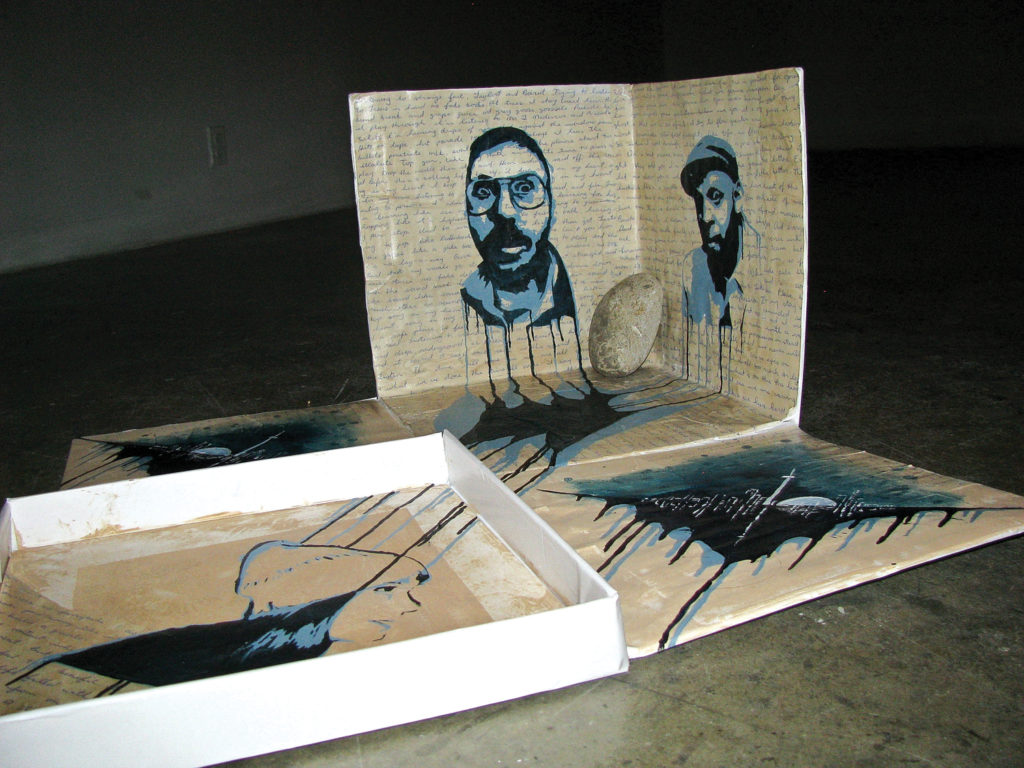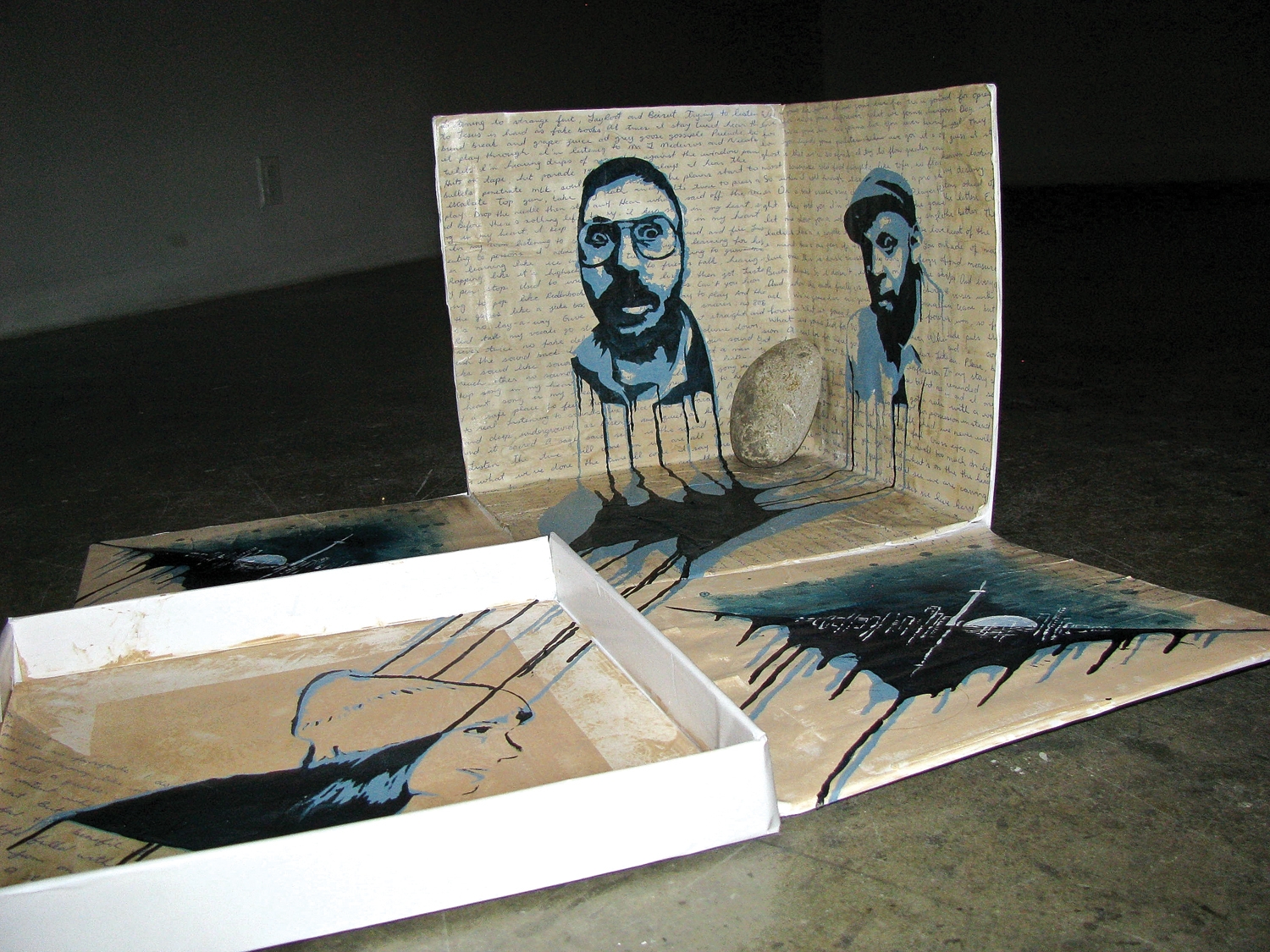Third-year visual arts class challenges students to express understandings of personal space
Sarah Ciantar
Contributor

The Goldfarb Centre for Fine Arts gallery currently showcases a collection of student work produced from various projects completed in a 3000-level painting class, Painting: The Spaces We Live In.
The course—taught by professors Janet Jones and Radoslaw Kudlinski—focuses on the contemporary conceptions of both private and public space. Students were able to produce works surrounding the ideology of what various interpretations of spaces were to them.
Upon entry to the gallery, a partially deconstructed box sits on the floor, revealing the various painted portraits, lyrics, and city scapes painted in blue acrylic. Stephanie Anacleto, third-year visual arts student, talked about her piece “Steph in a Box”, a representation of her personal space.
“I don’t really have my own personal space,” Anacleto admits. “So I focused on expressing my mind and imaginations as being my own private space.”
Anacleto continued to explain that the box represents her internal mind, and filled the interior of the box with a self-portrait. Portraits of her favourite artists and lyrics fill the box, representing the inspiration that they have on her creative process and mental space.
The cityscape representation explores potential for what kind of outdoor scene can become her private space. She adds that the lake shore is a calming, ideal place for her to be in her private creative mindset. This piece was created with mixed media, an example of the creative freedom allowed in the course.
A thin strip of wood runs along the north corner wall, but closer inspection reveals that a city view is created along it, made from water colour, nails, and thread. This mixed media piece, “Hanging by a Thread”, made by third-year visual art student Kyle Sorenen, was produced for a project centered on the ideology of futuristic public spaces.
Sorenen talks about how public spaces today focus on constant building upon building, to be carried on to the future society. The artist thinks this constant building is detrimental to society.
“The thread is representational to the fragility of future society, being held in the balance by a single thread because of the constant desire for continued building in limited space,” says Sorenen.
Fourth-year Sari Ronen’s large-scale abstract piece, “Year 2100”, was also created with the conceptualization of a future society.
“It’s meant to express an apocalyptic society, caused by further corruption,” Ronen says. Aesthetically pleasing and eye-catching as a result of its larger scale and colourful nature, this piece allowed Ronen to play with the techniques of abstraction.
“The Year’s Last Loveliest Smile”, a colourful, serene acrylic landscape by third-year Alisa Polsinelli, also works off the theme of private space.
The landscape is filled with the artist’s fond memories, a chance to connect herself with the image and concept of the area by using techniques of painting detail, such as leaves, with her finger tips.
“Painting this work with my fingers allowed it to become more personal to me and make me feel a part of it,” says Polsinelli. Creating the texture using a pallet knife, she continues, was intended to create the softened pastel look, meant to express just the essence of the surrounding environment in the image.
All artists—Anacleto, Sorenen, Ronen, and Polsinelli—agree that this course is extremely beneficial in creative exploration and experimentation, and the instructors Jones and Kudlinski allow creative freedom to try new techniques and help to build upon your creative perception. In addition, the artists recommend this course to all aspiring painters.


